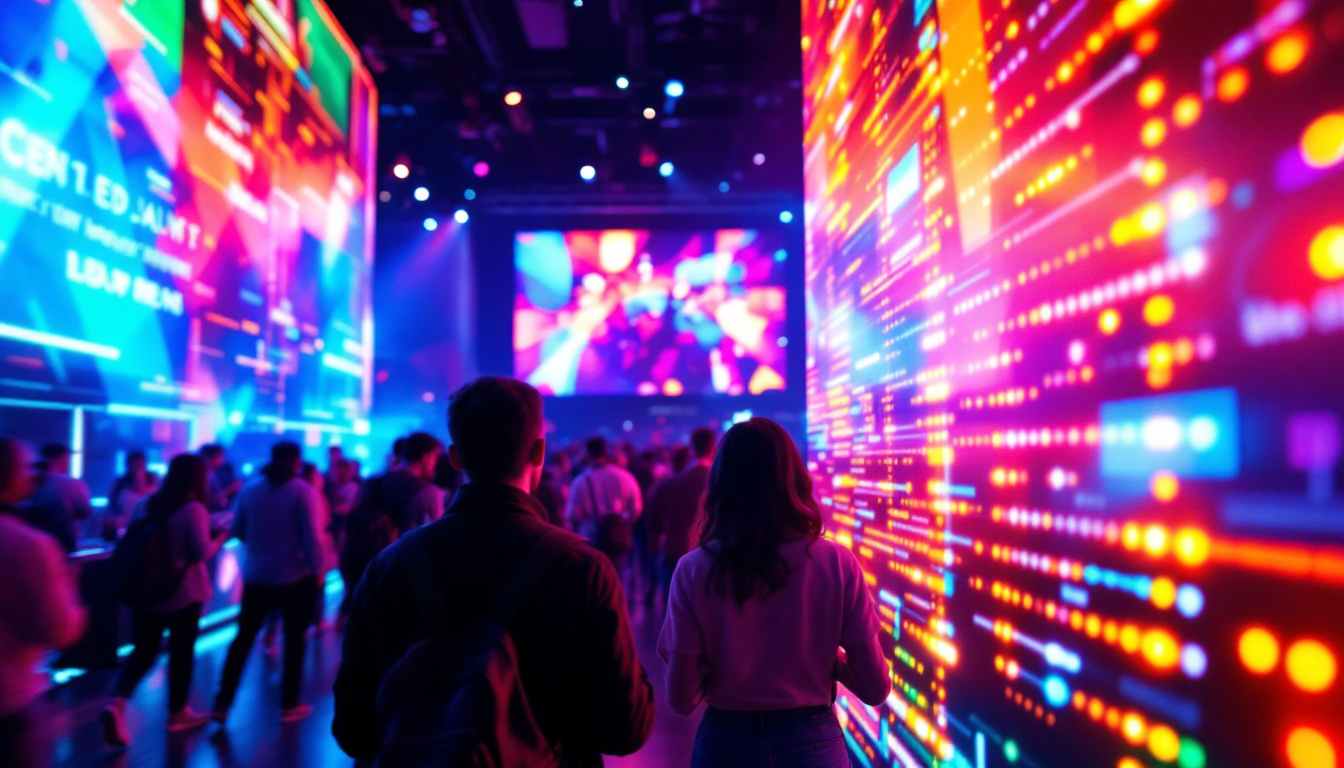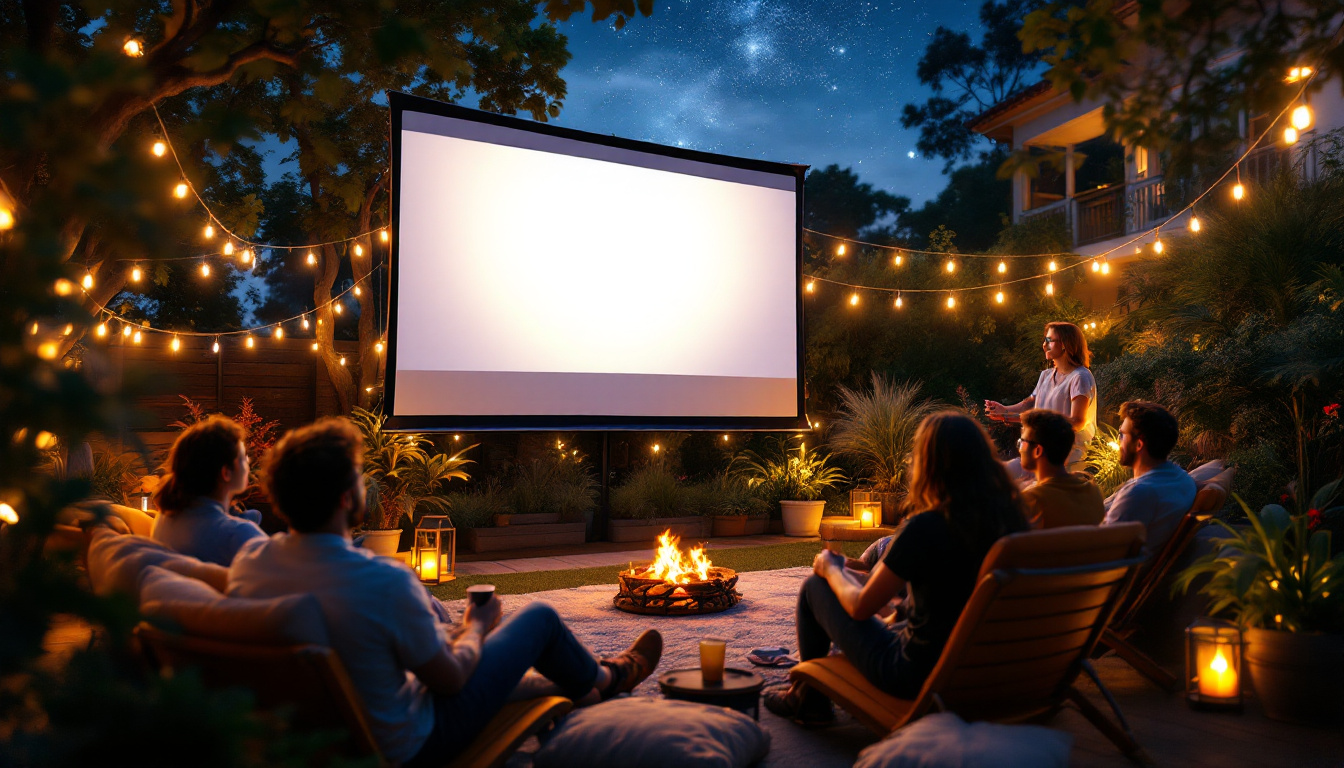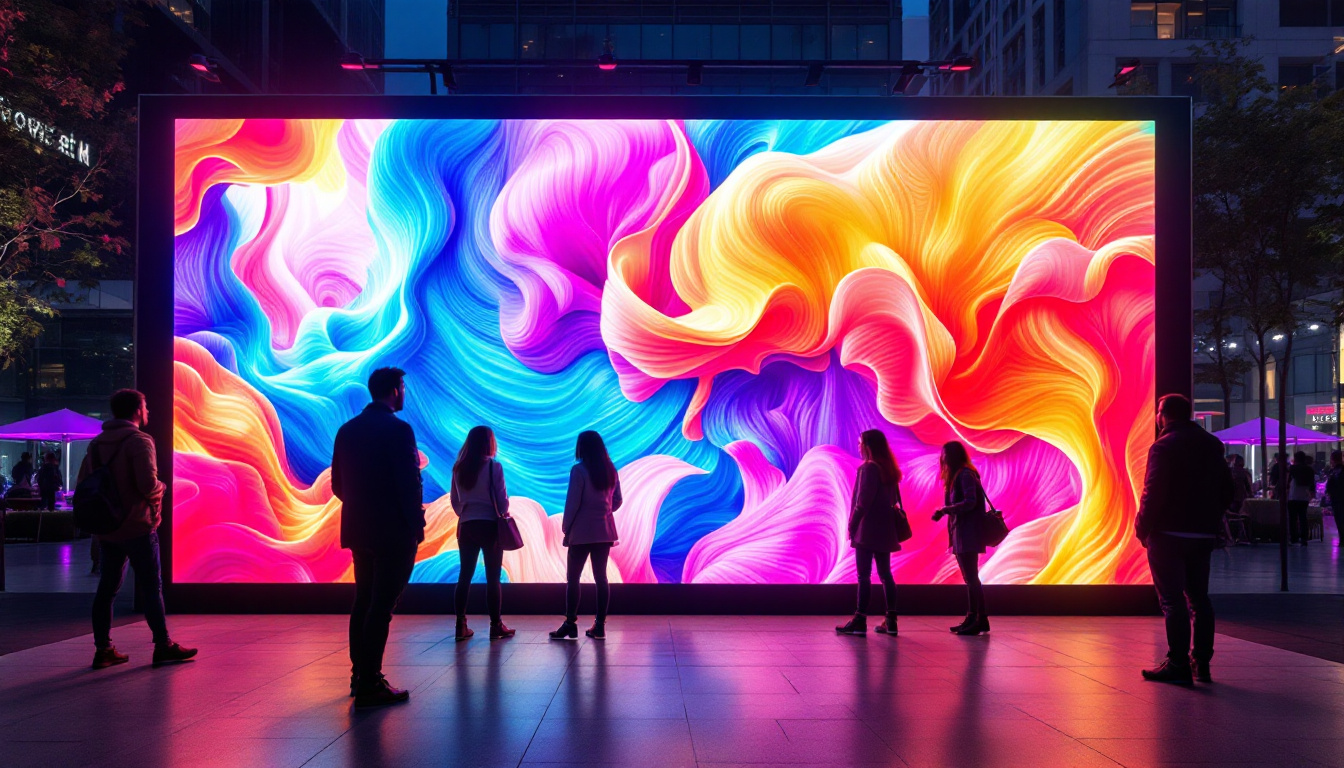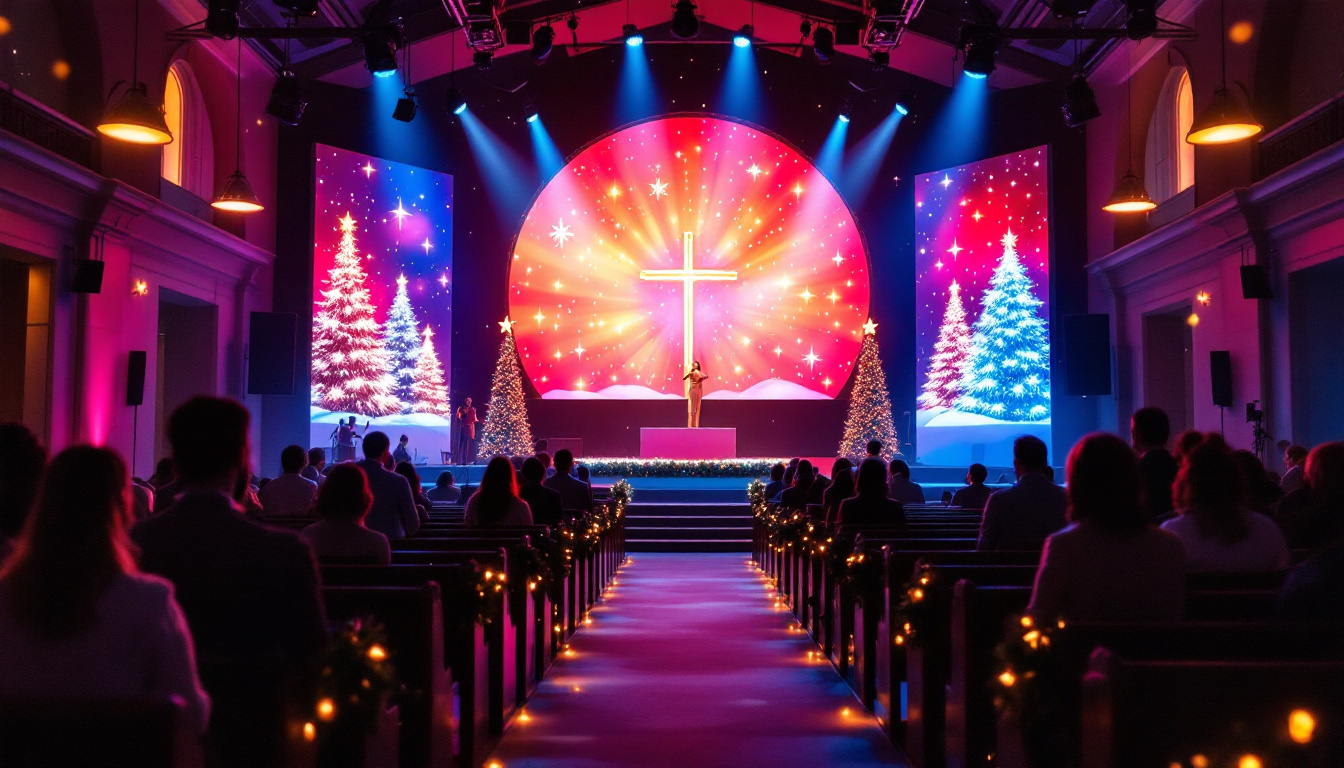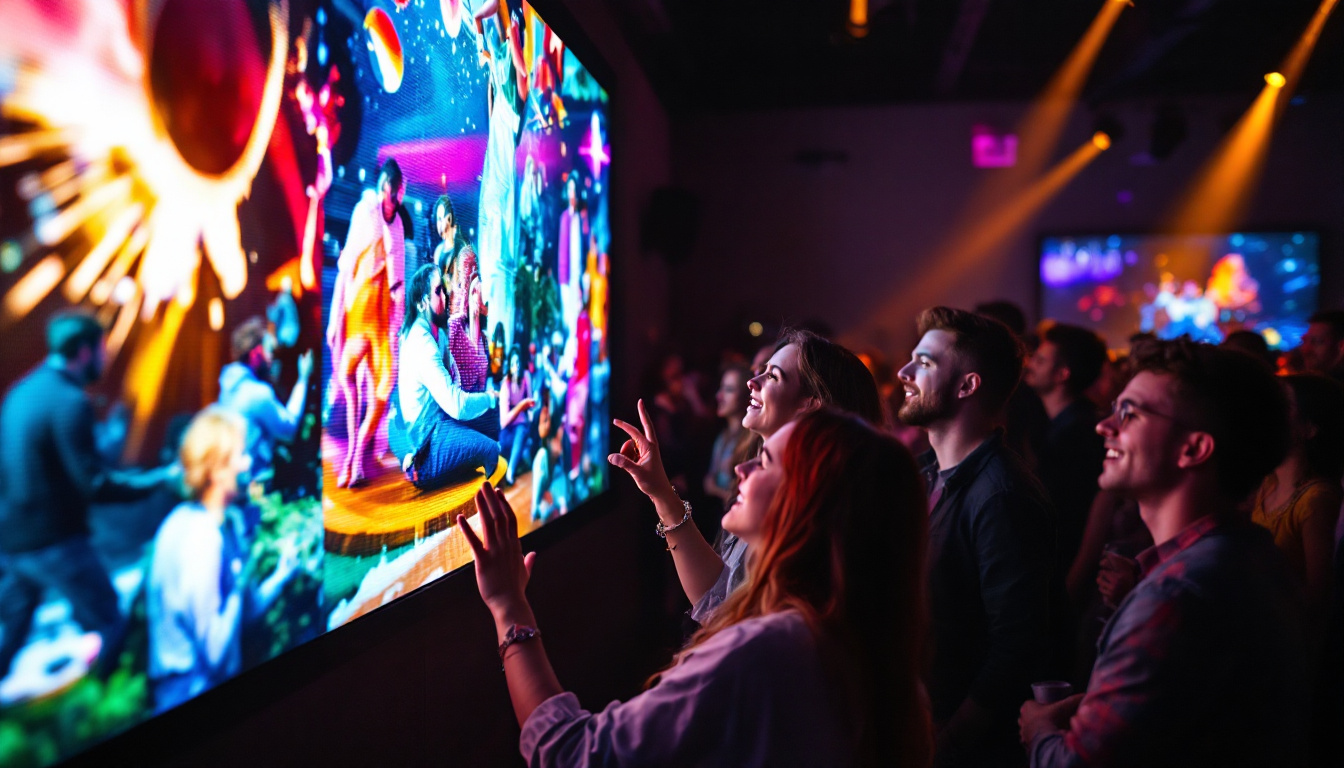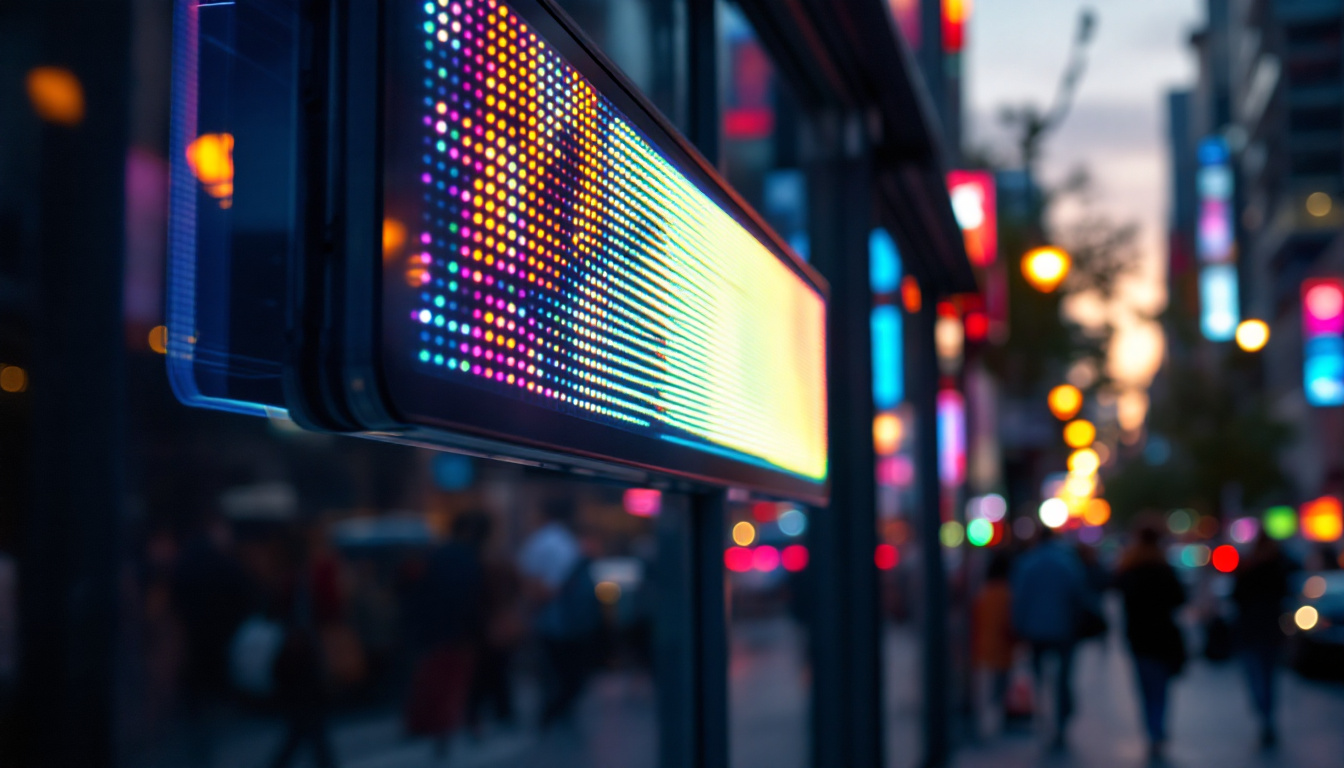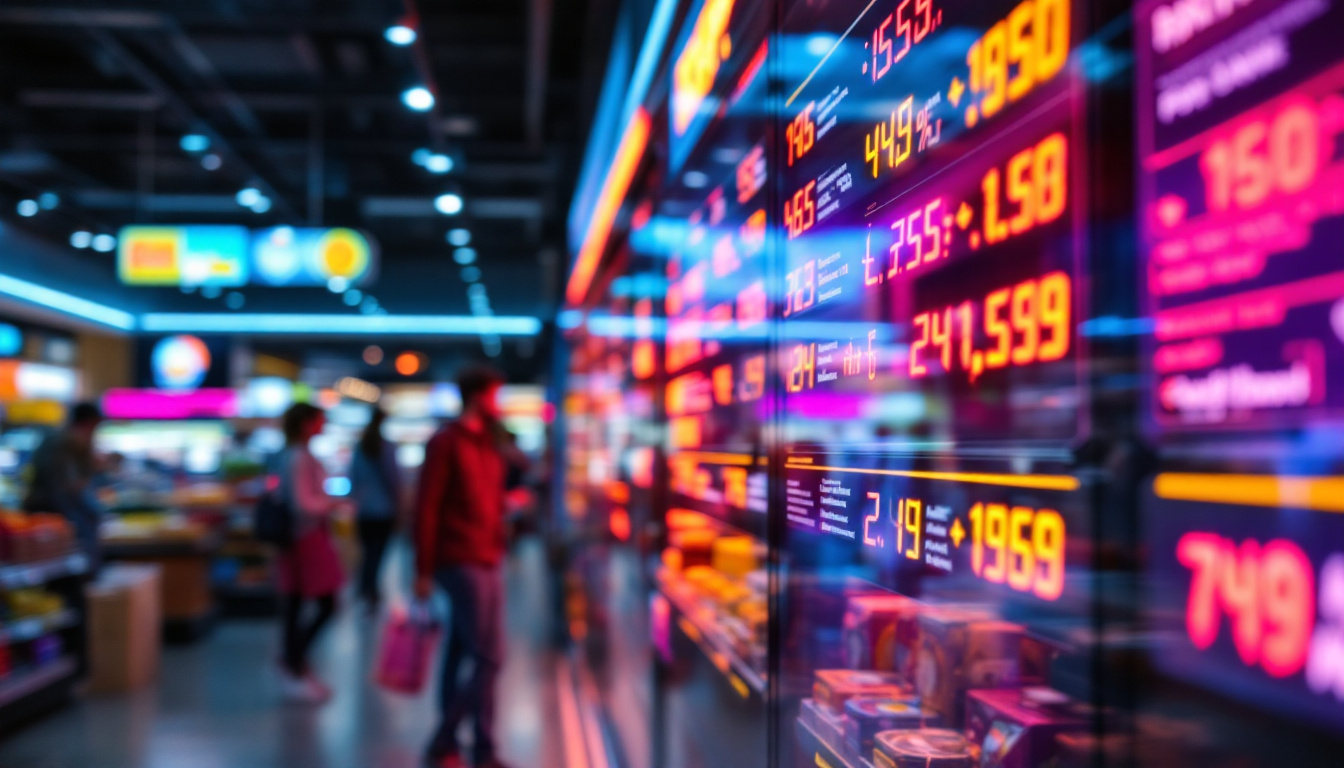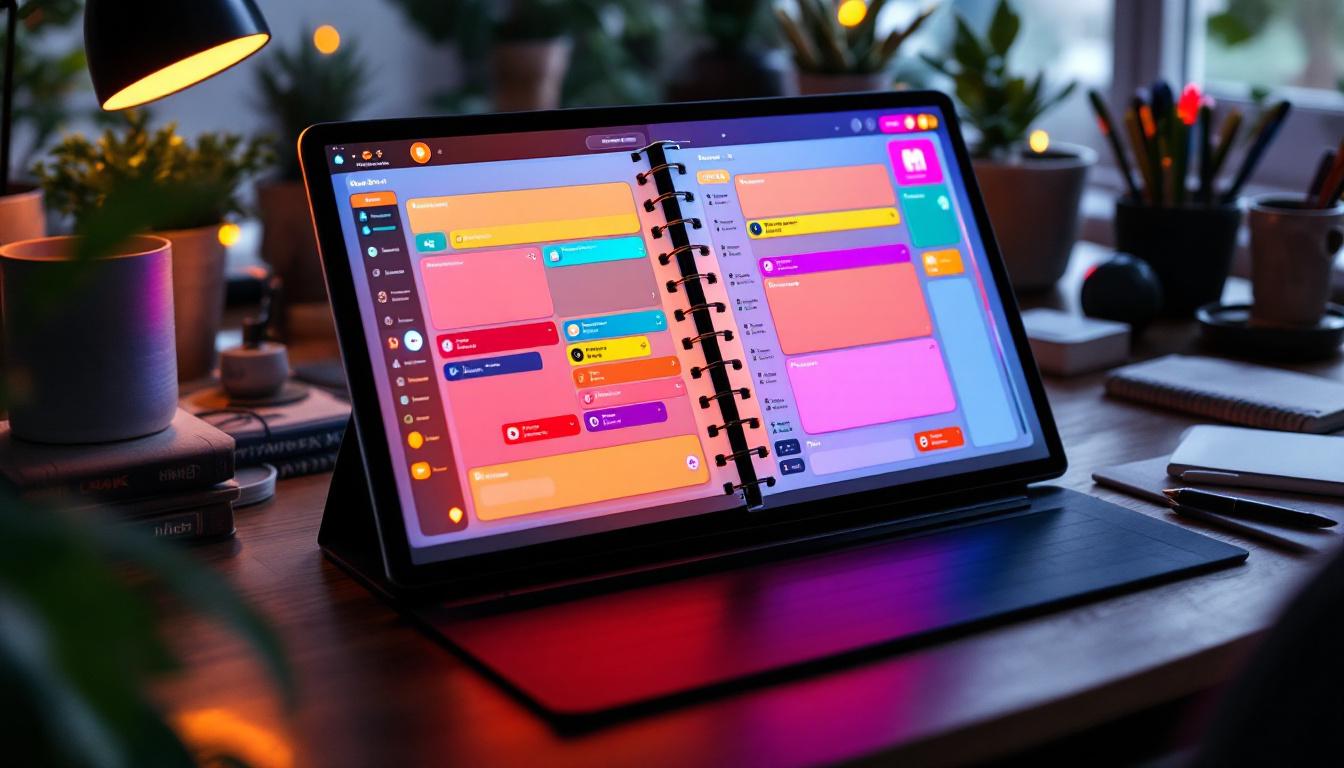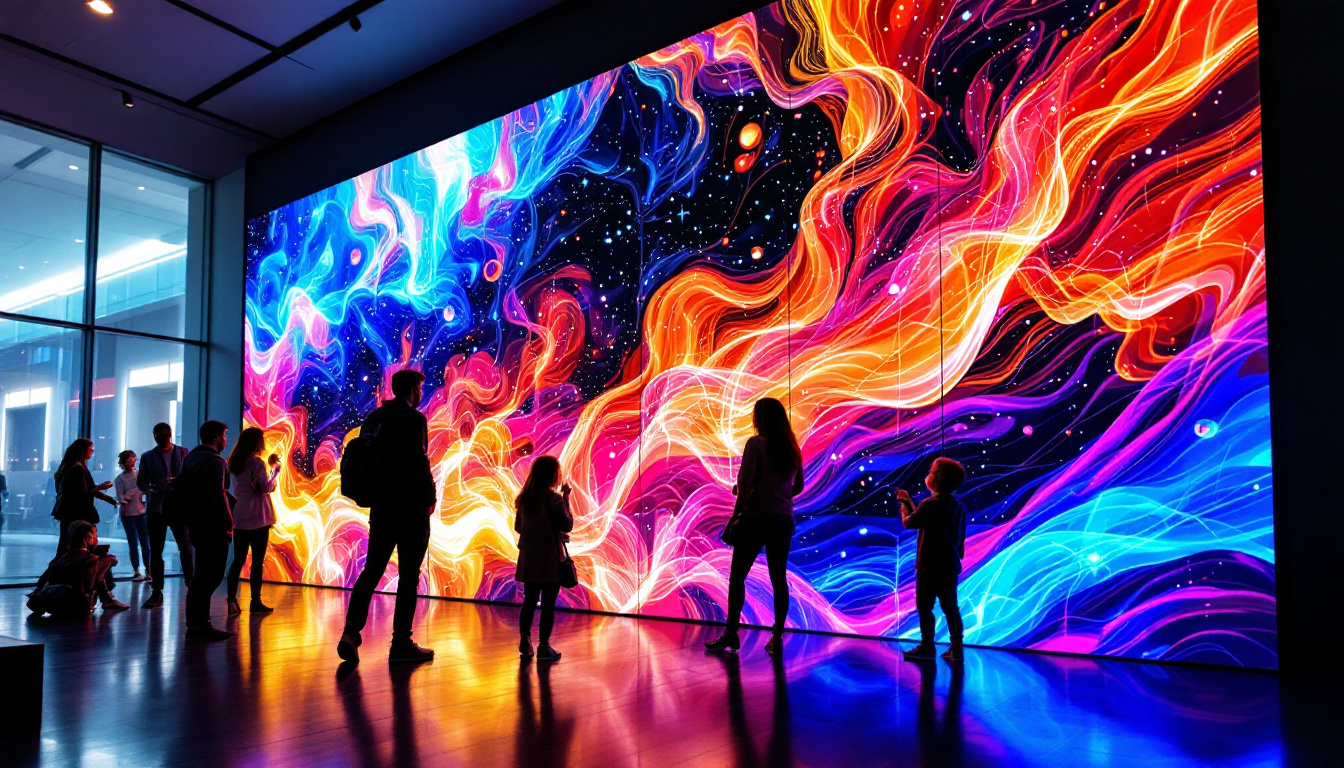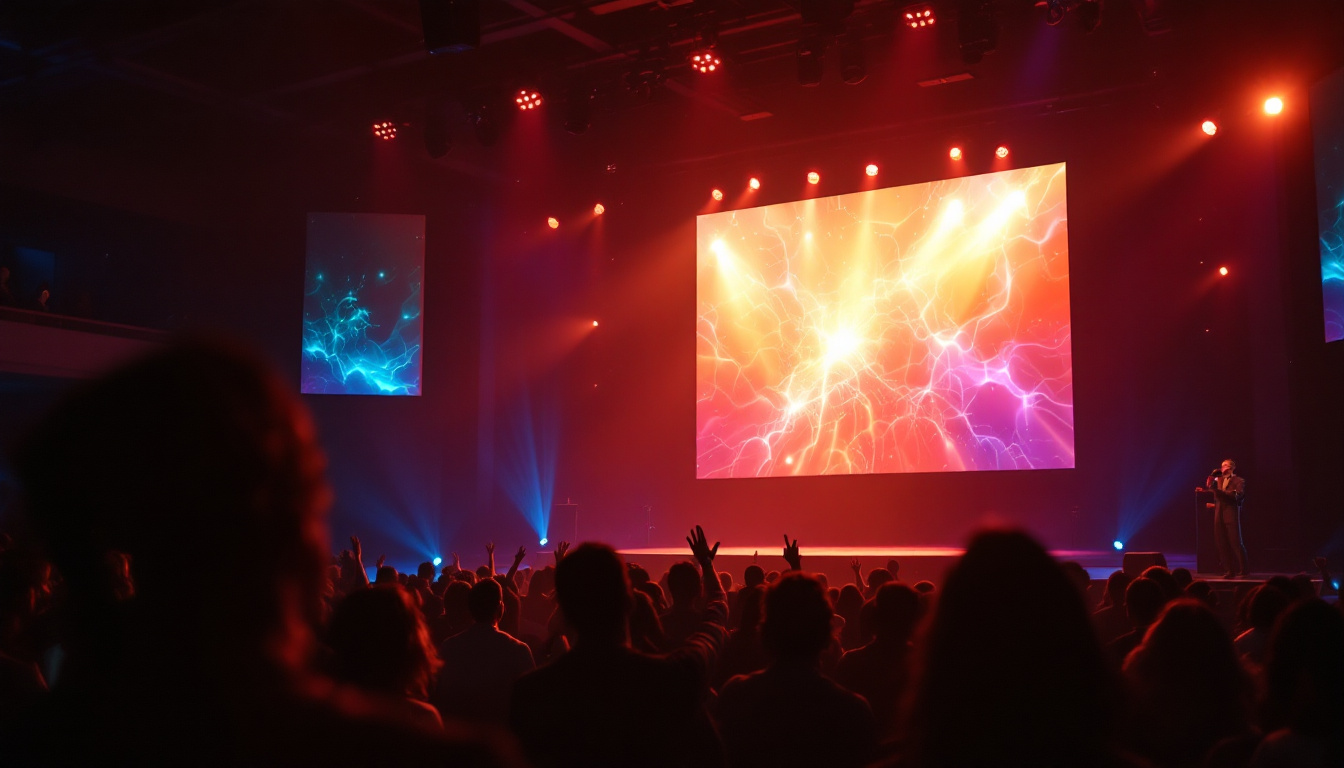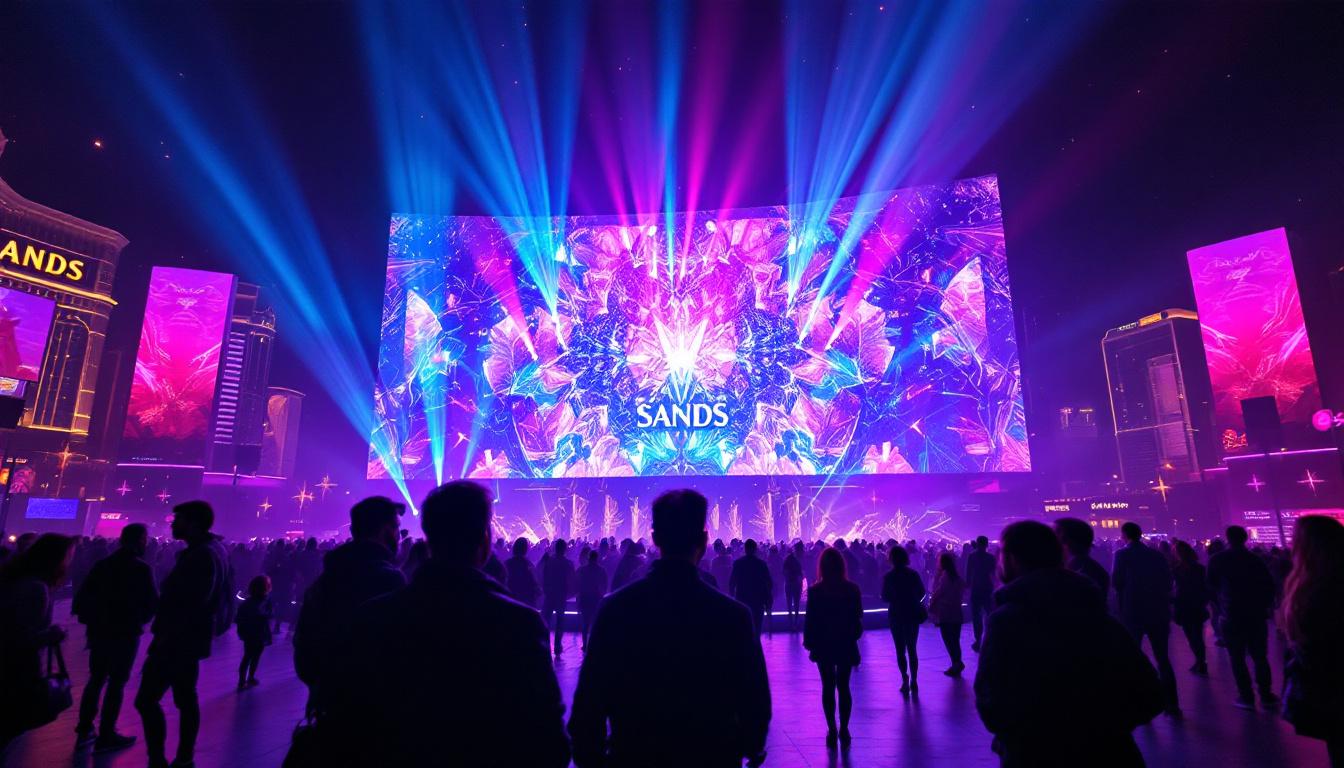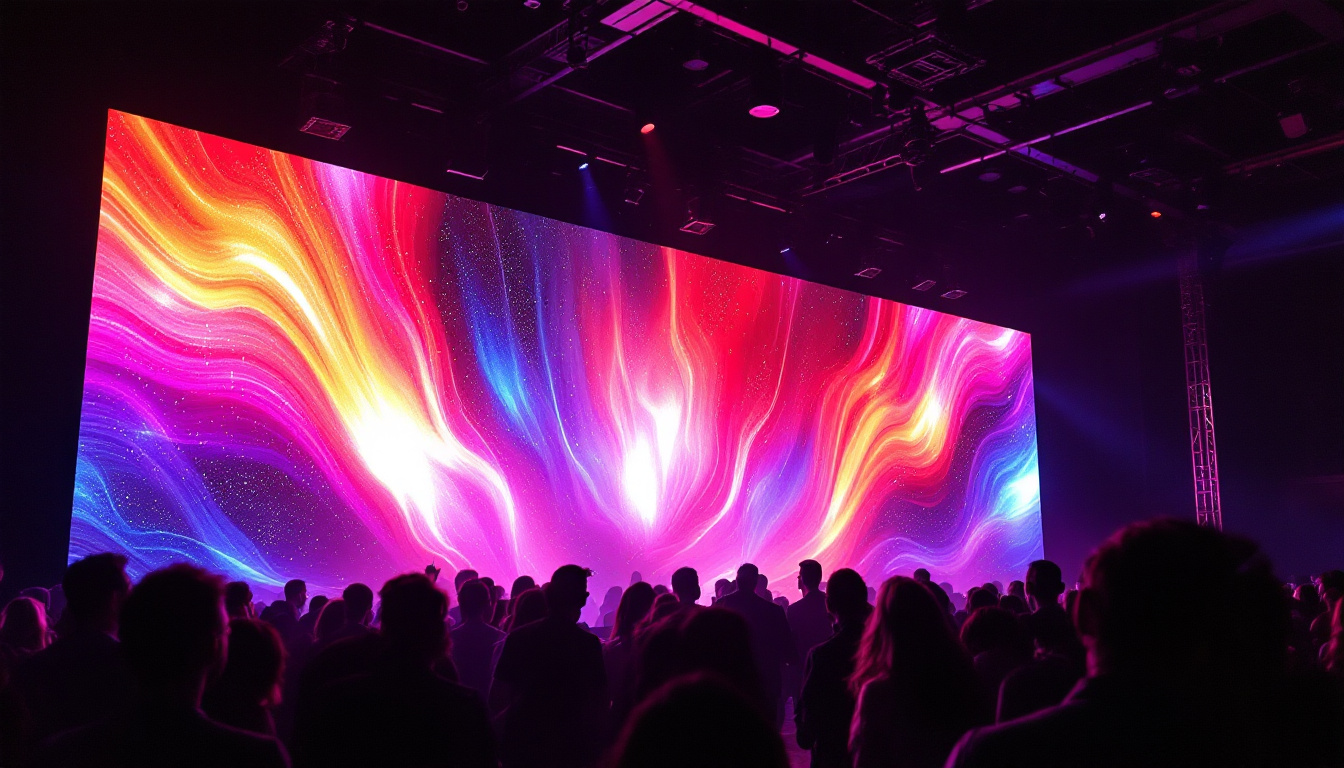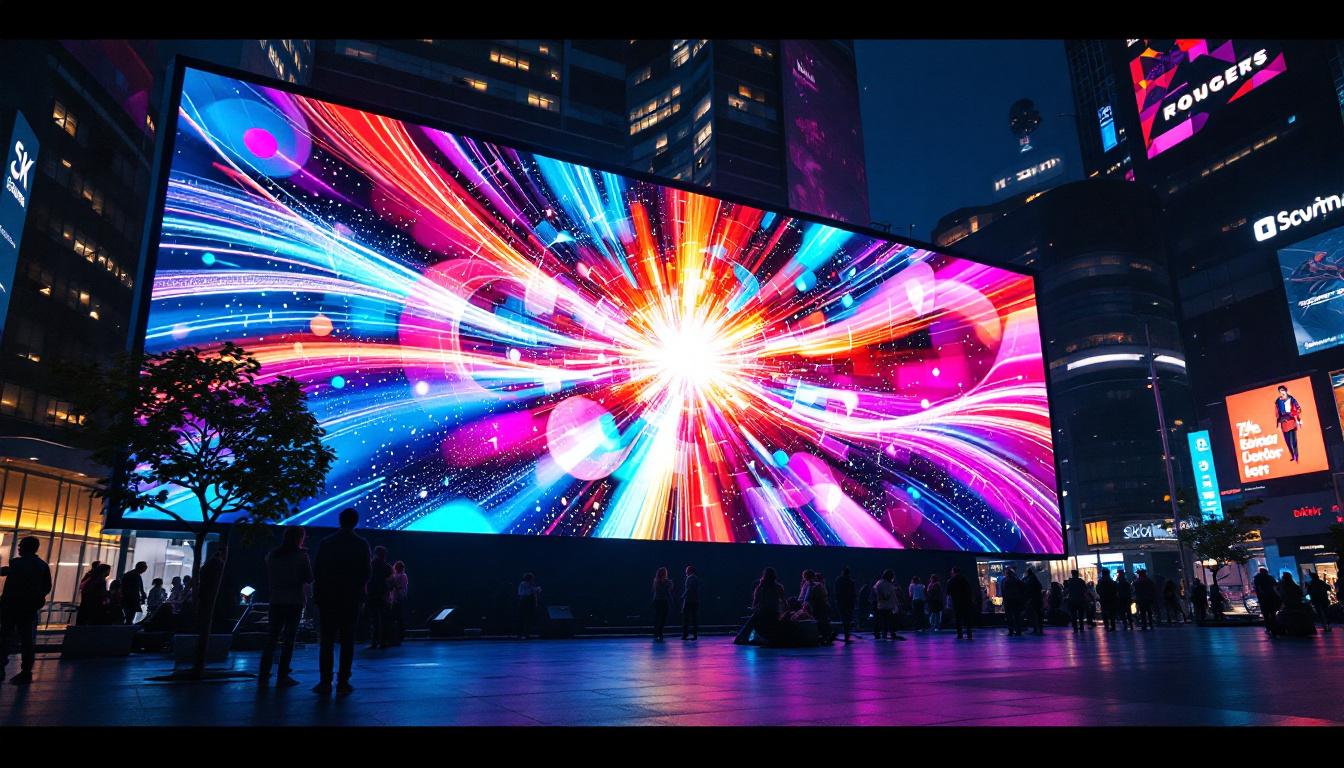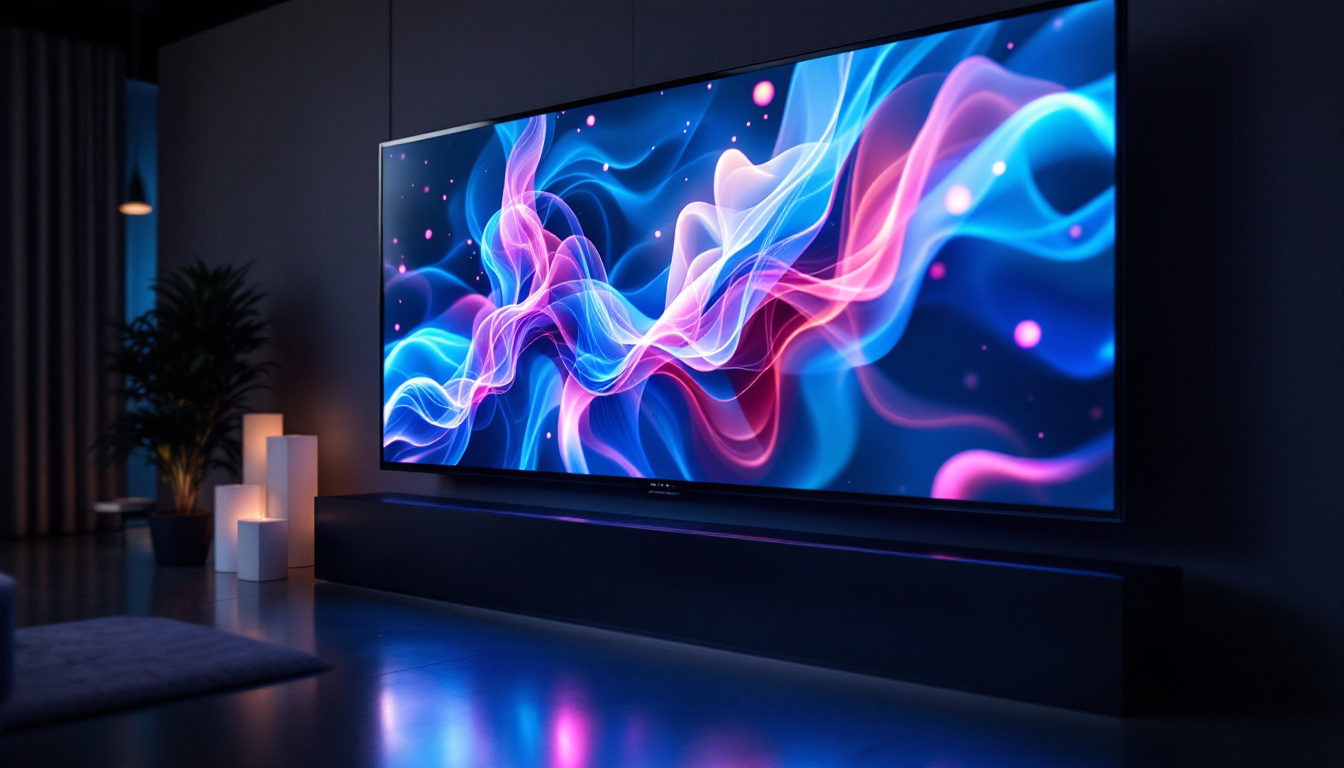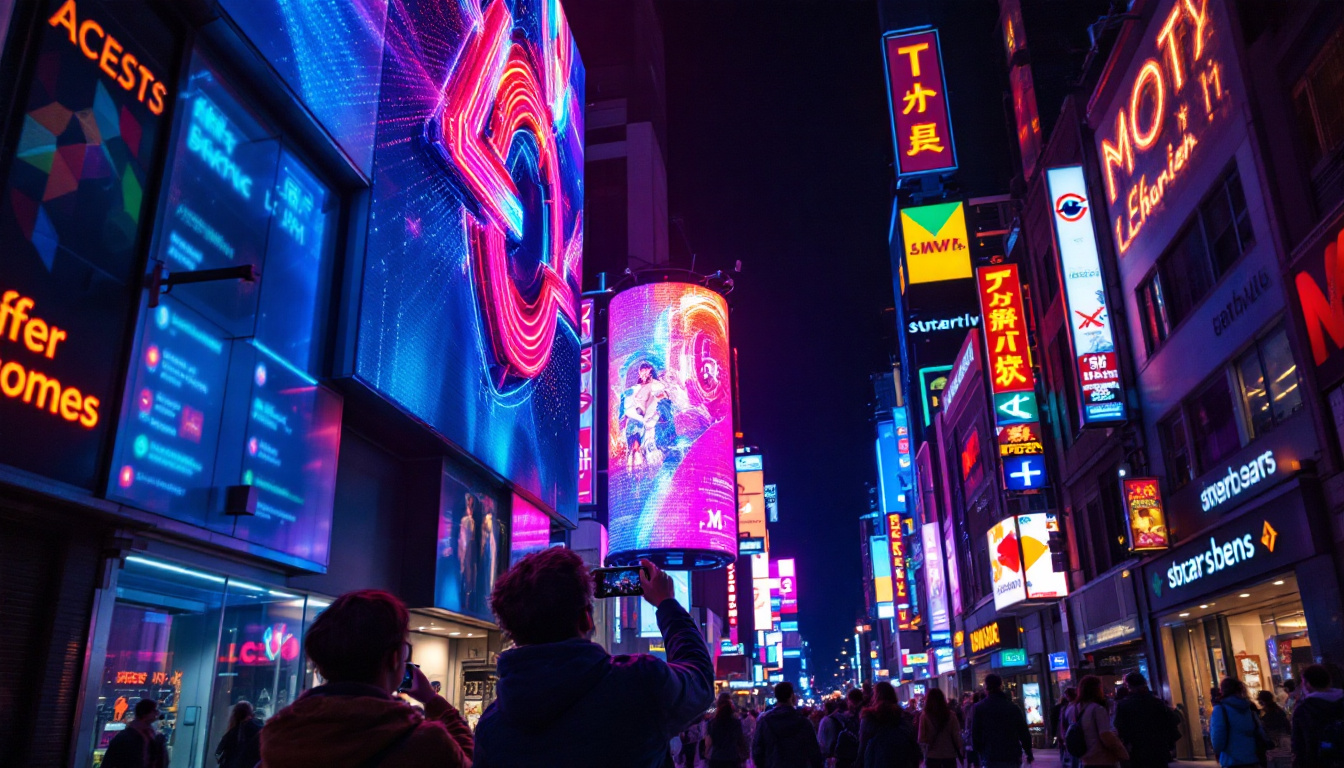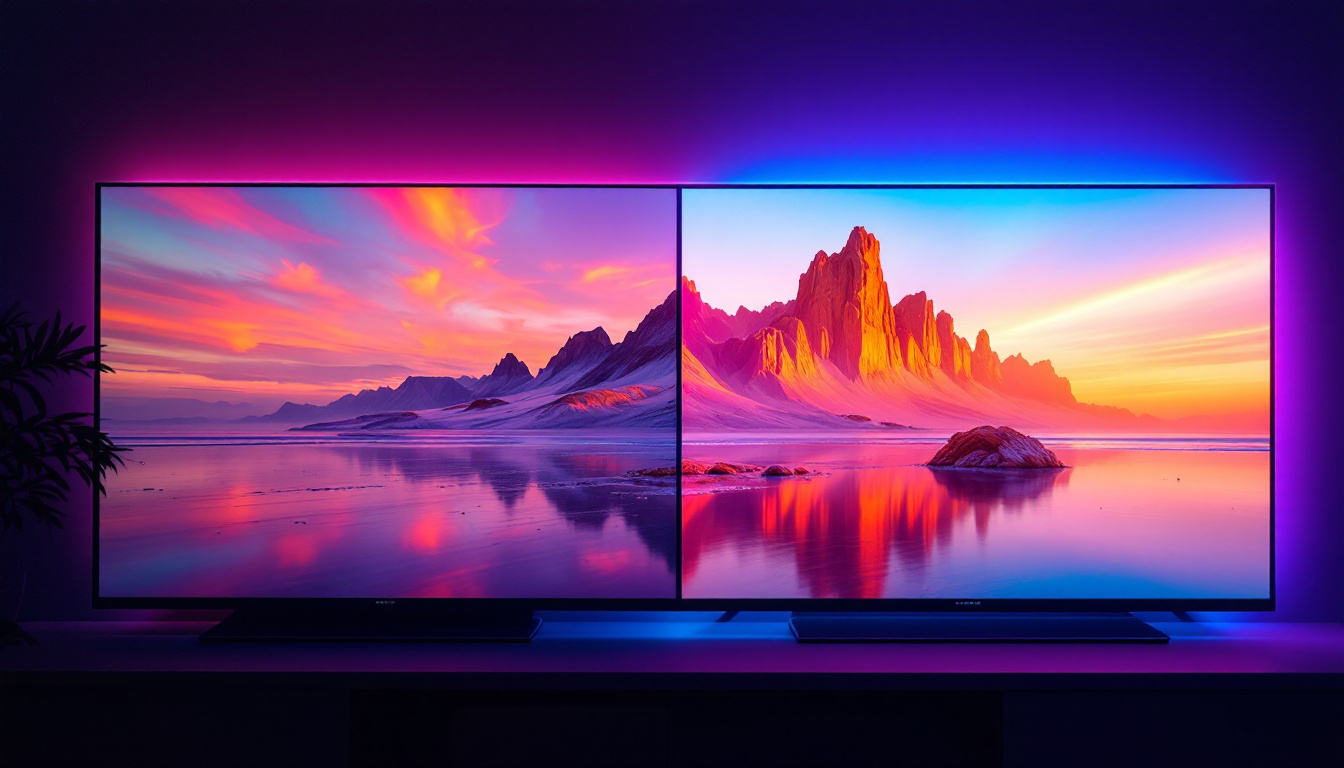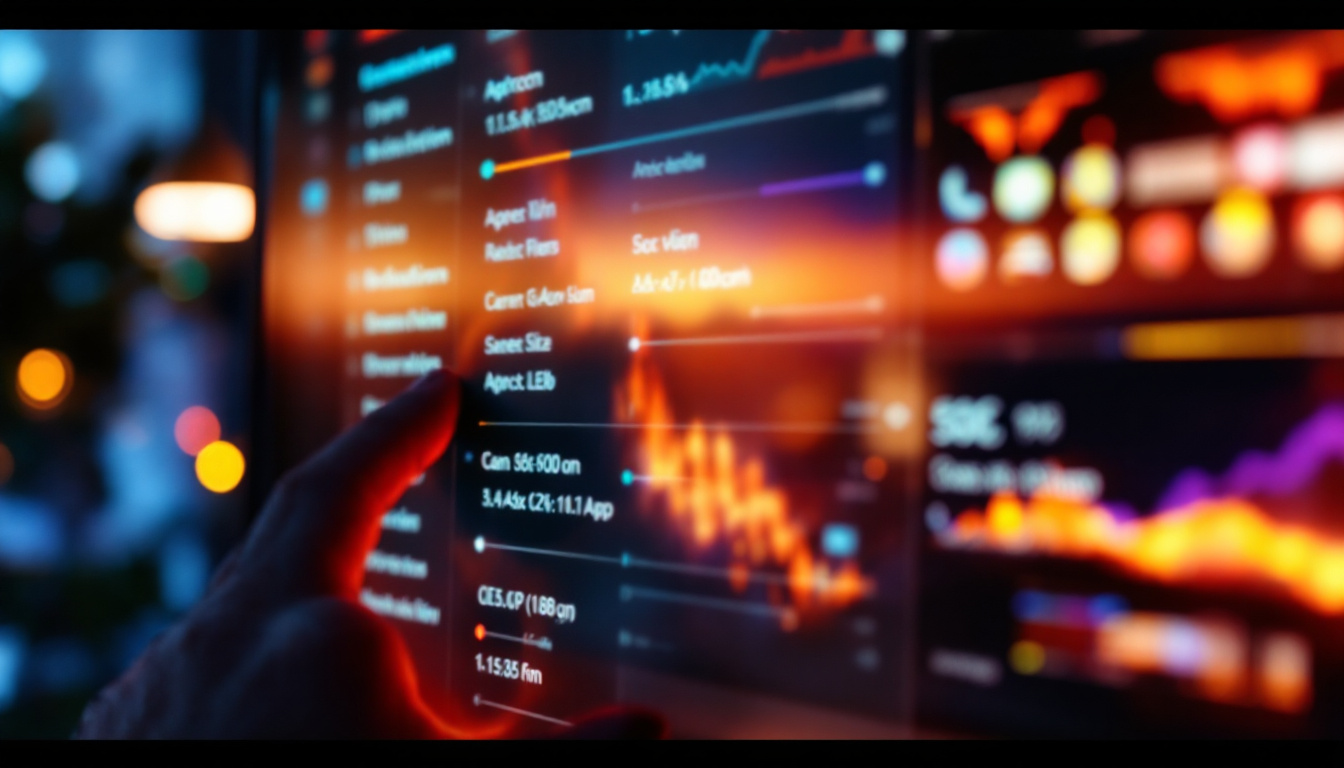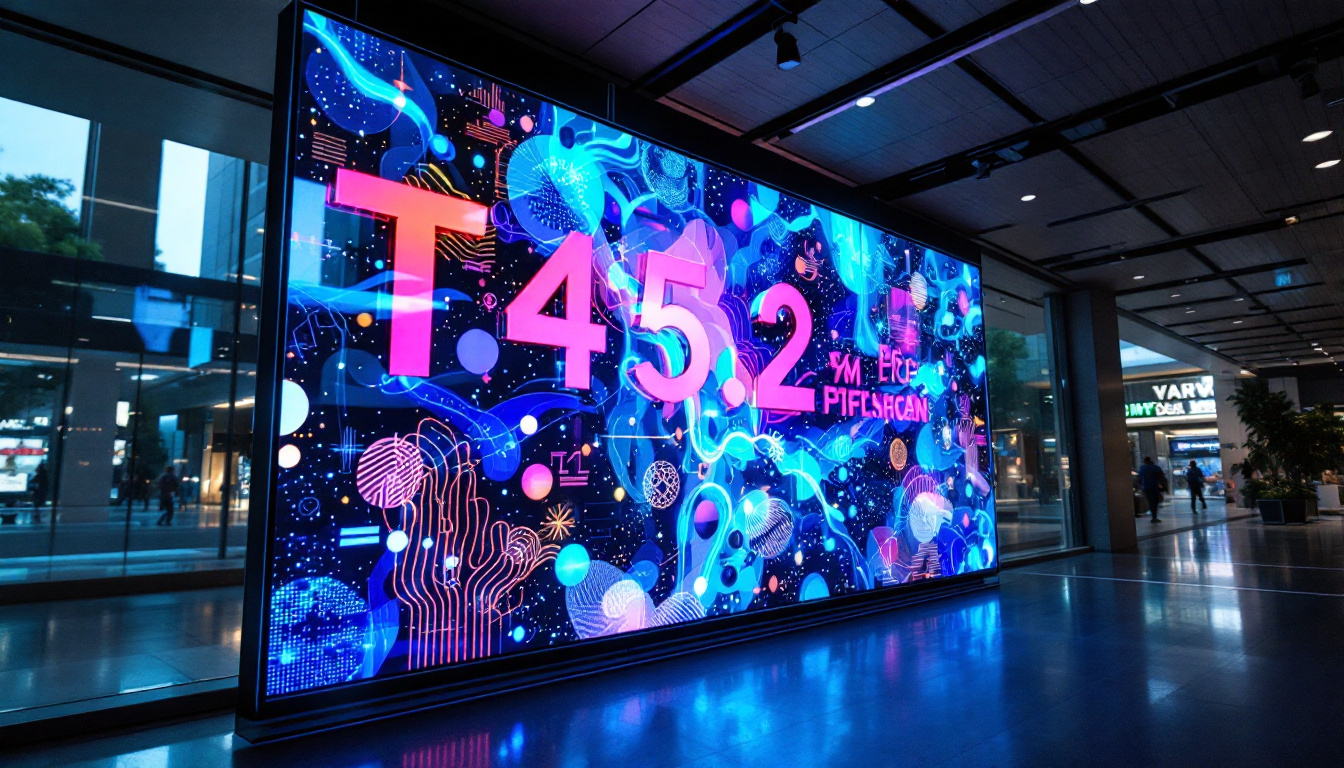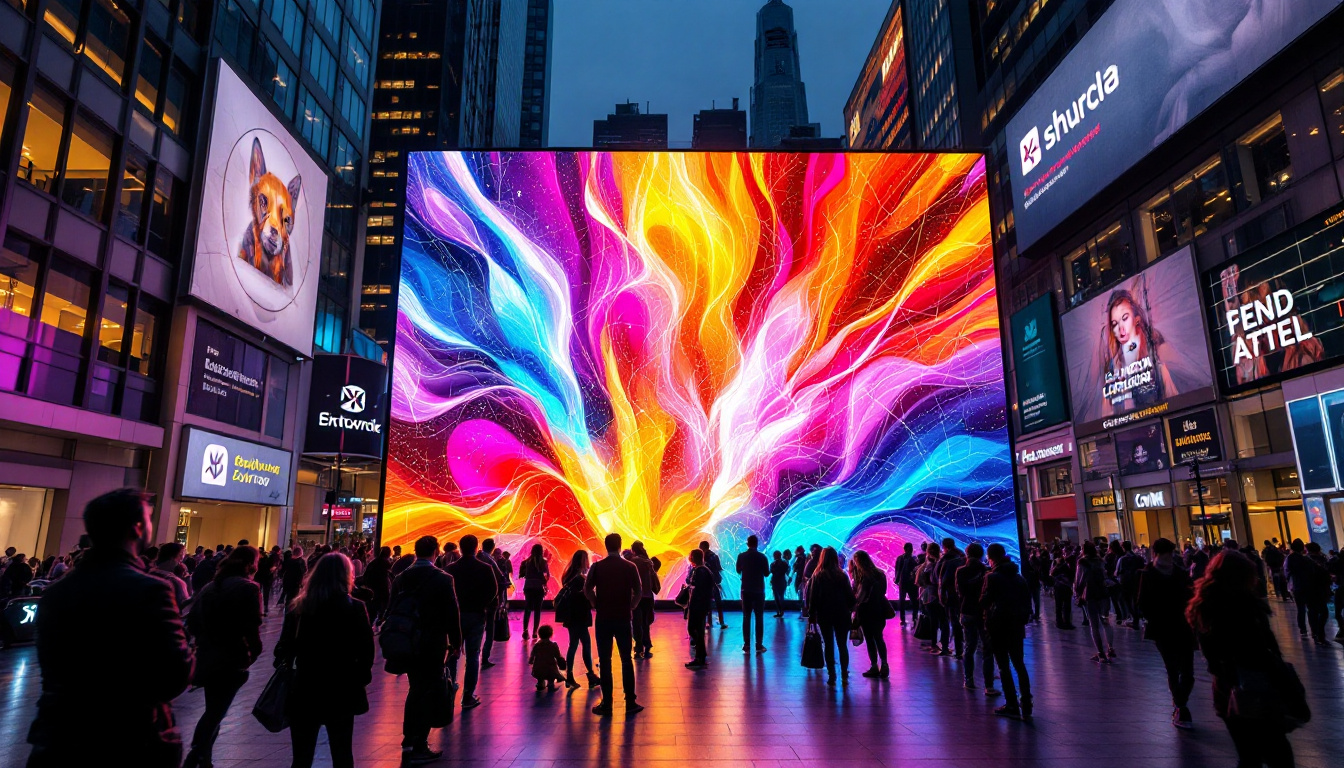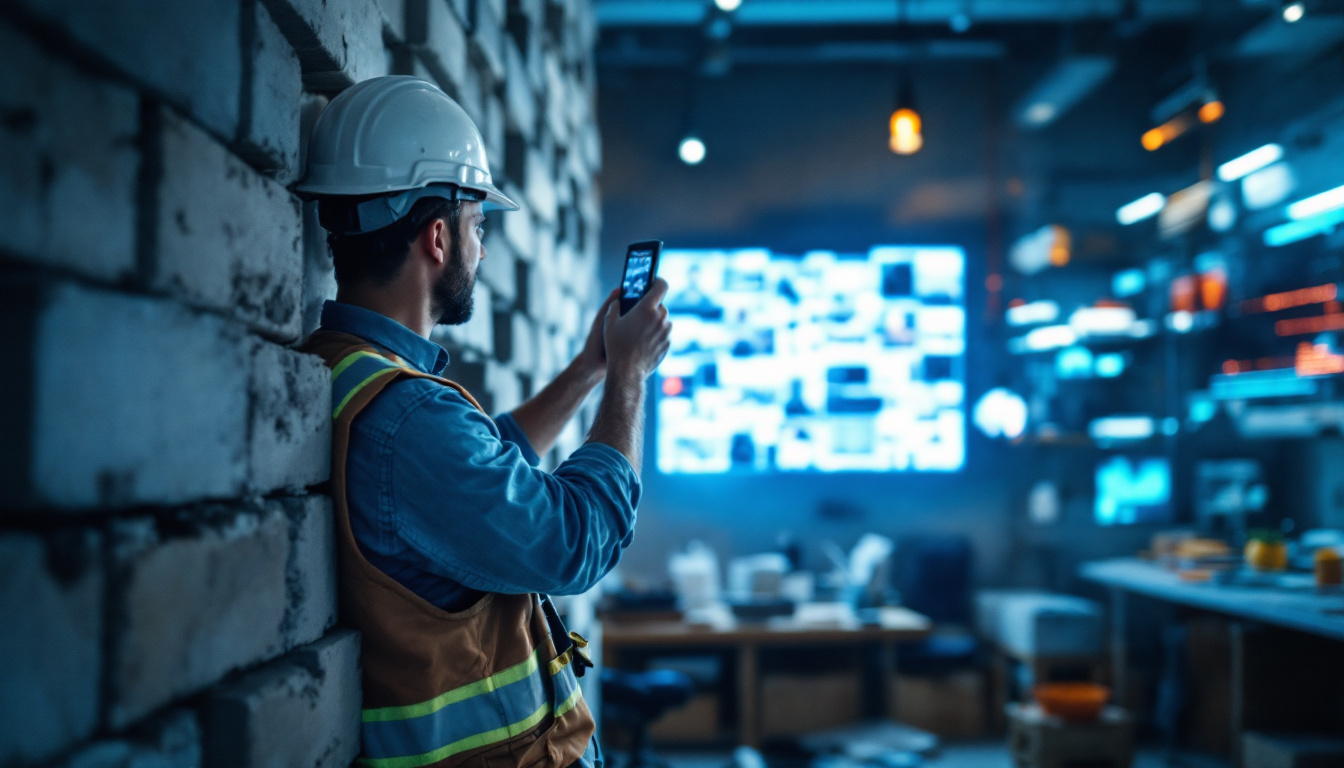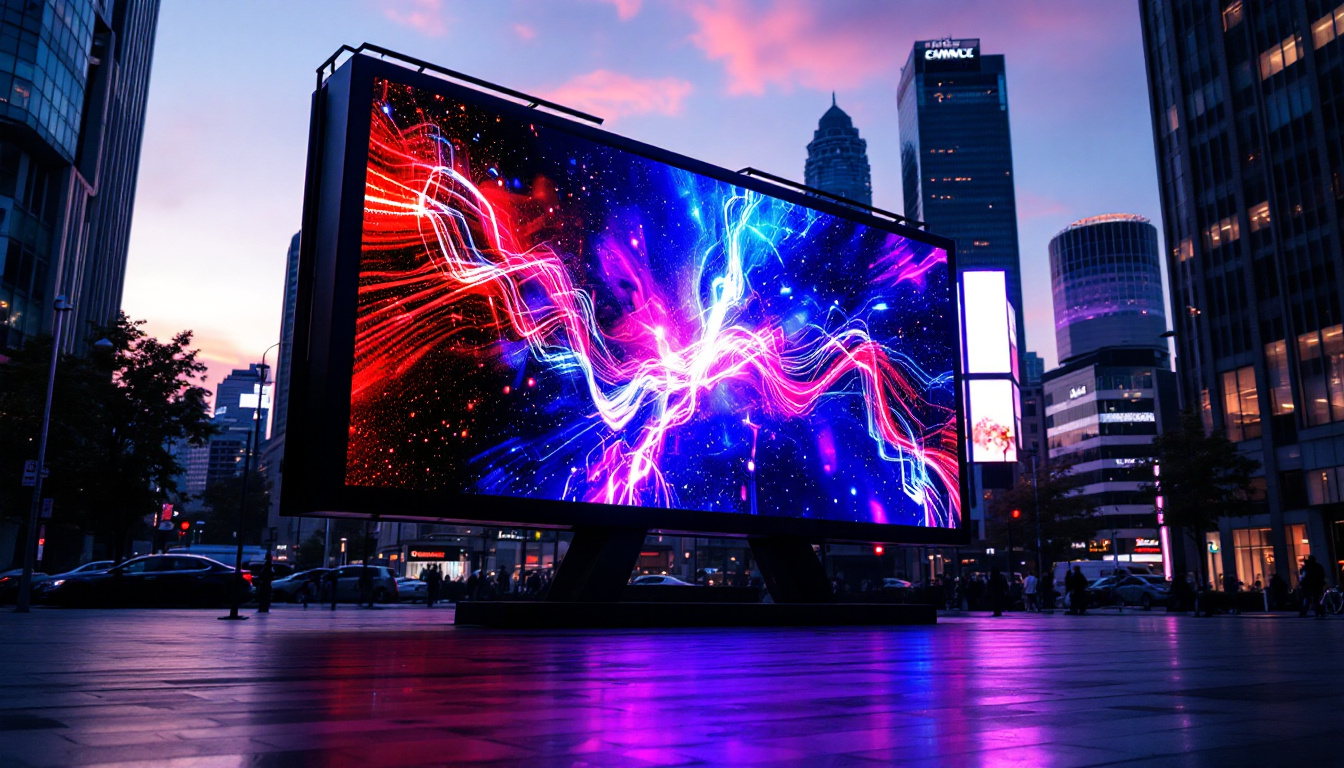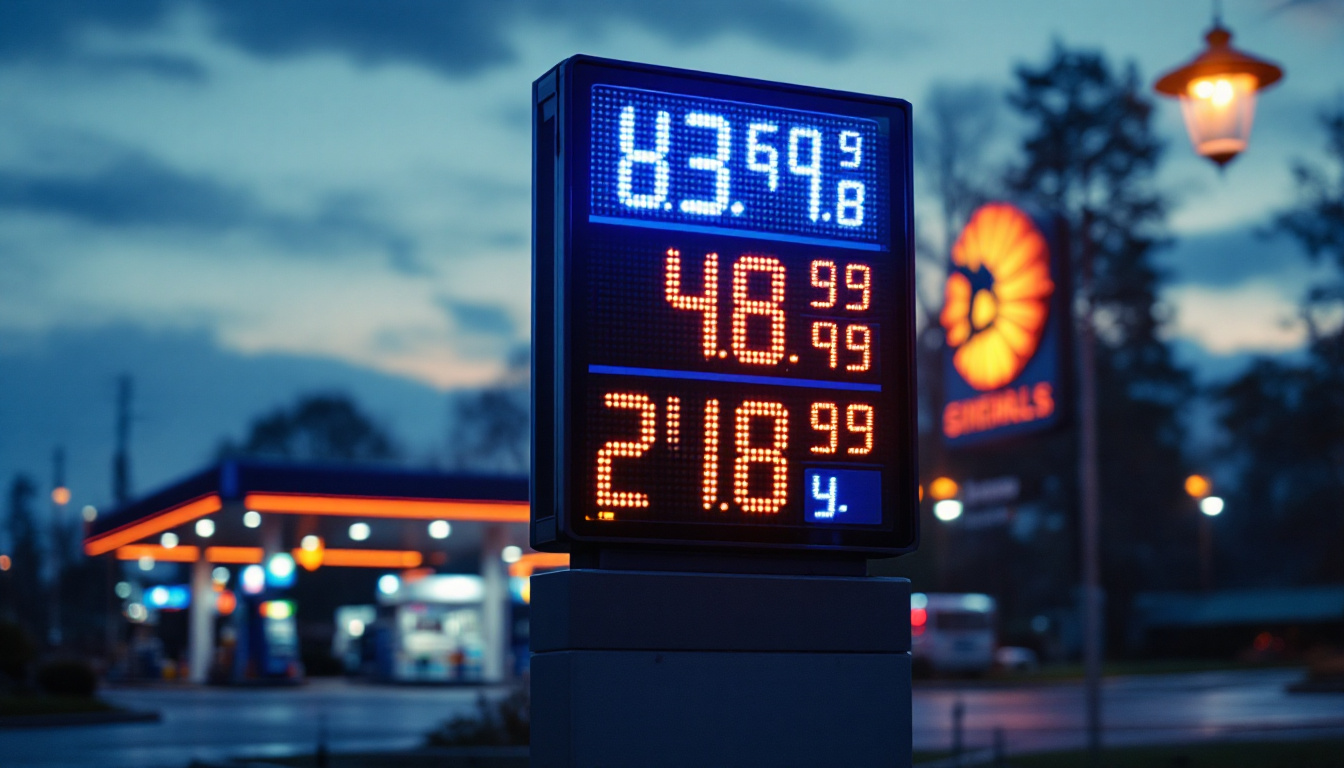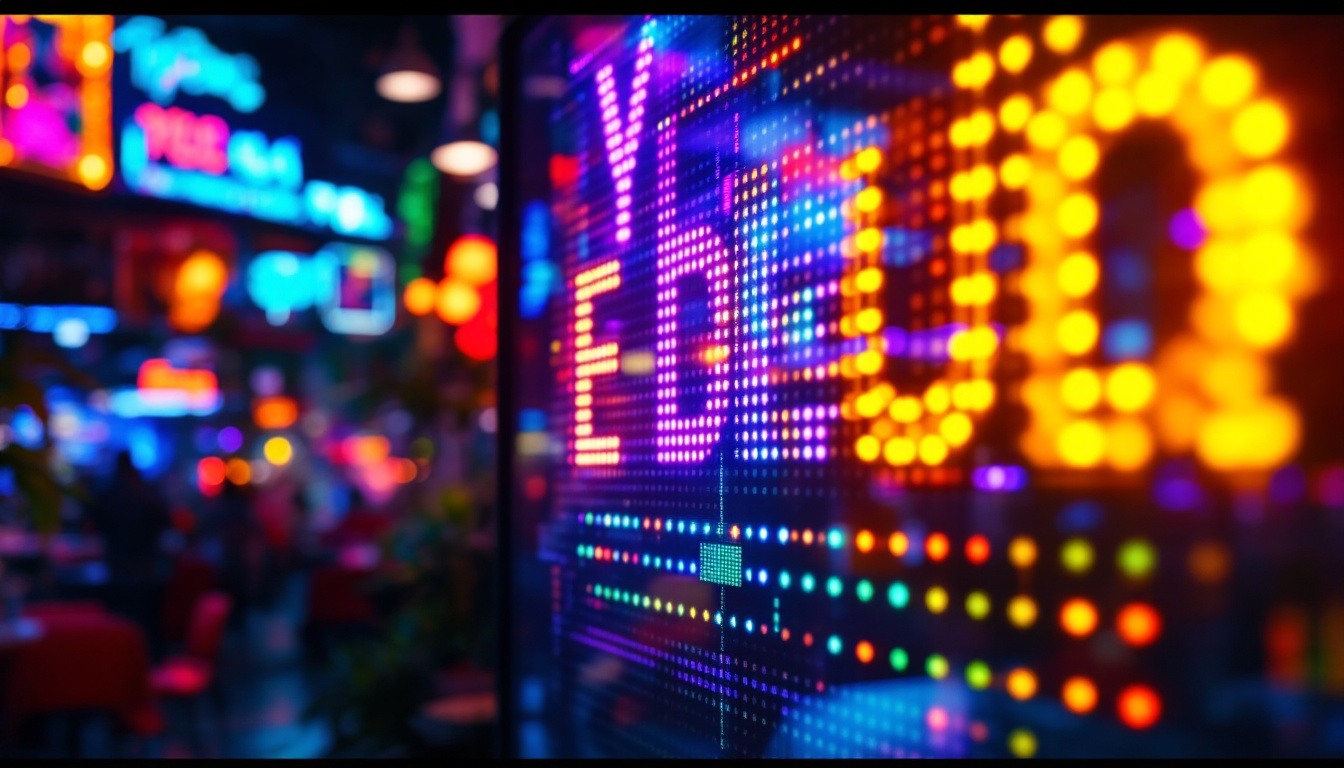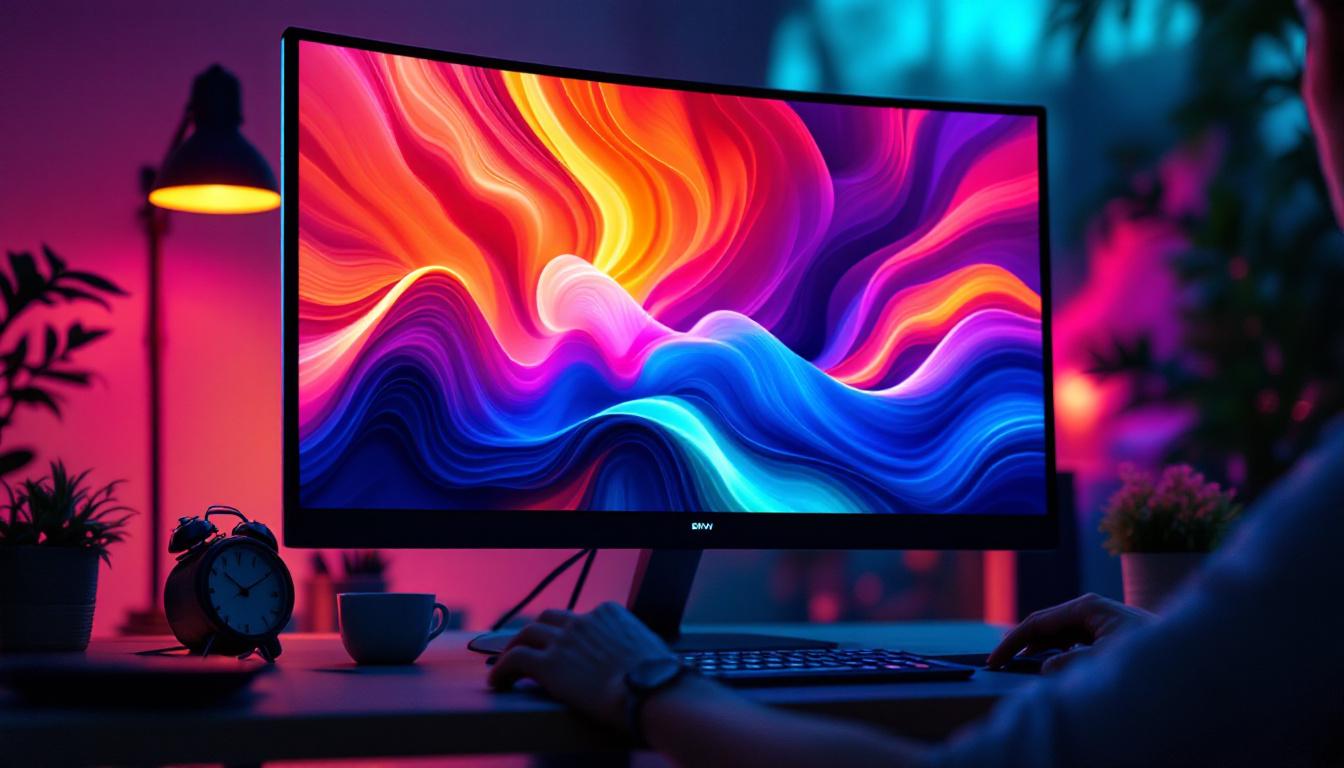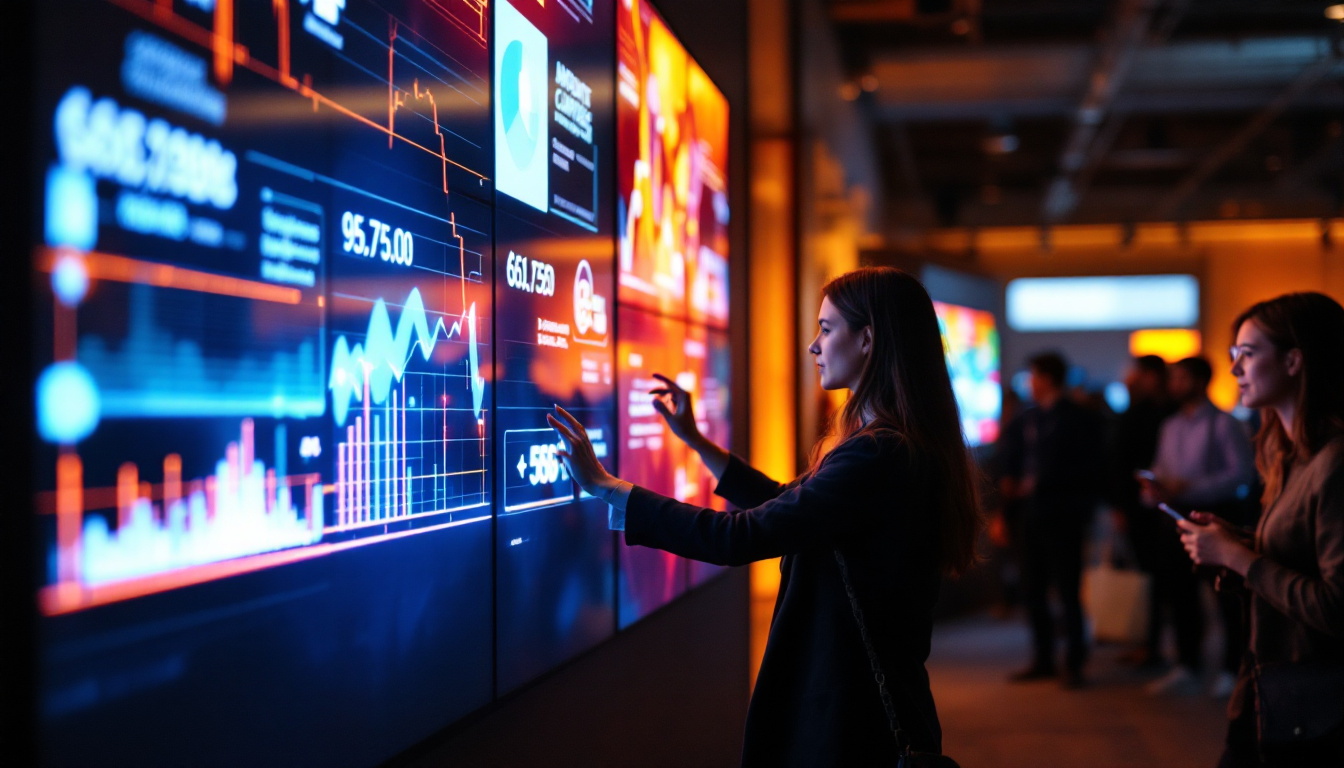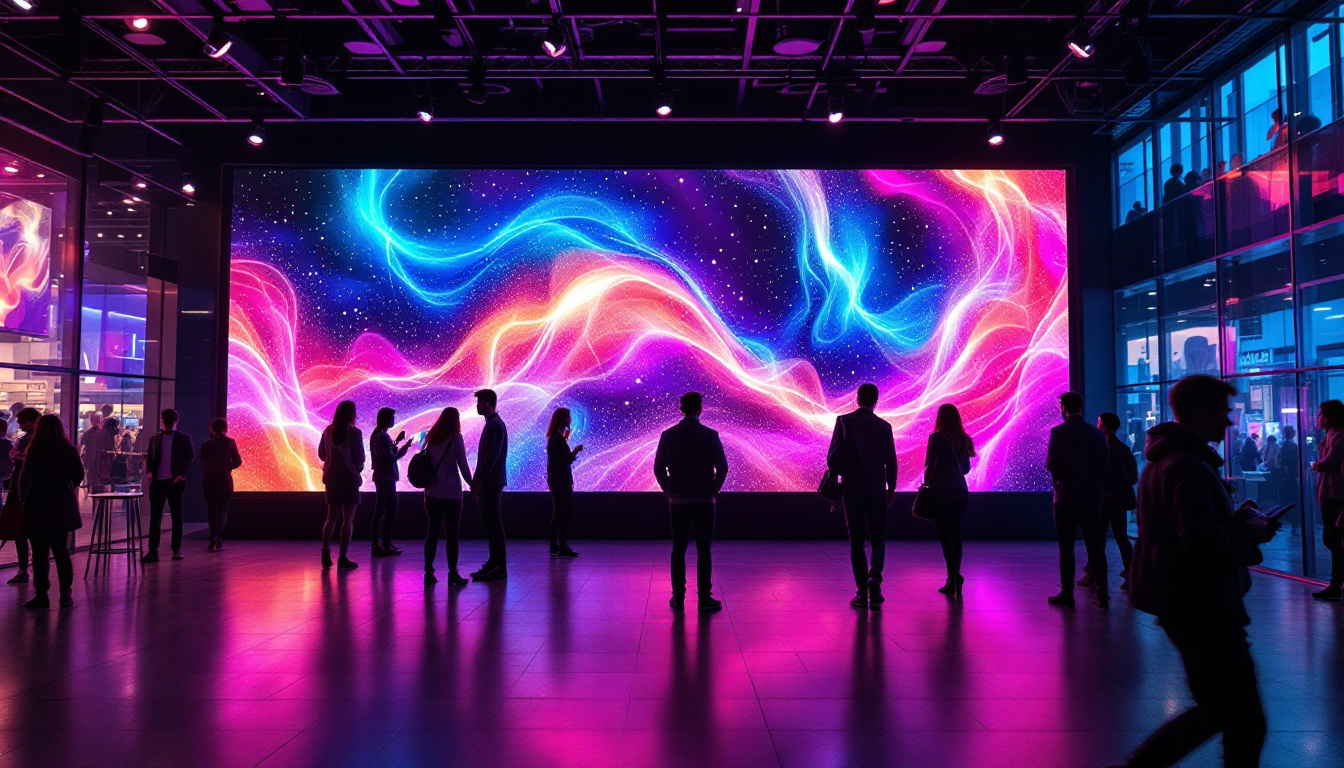In the modern world of event management, the use of LED displays has become increasingly prevalent. These vibrant screens not only enhance the visual appeal of events but also serve as powerful communication tools. Understanding the intricacies of LED displays can greatly benefit event organizers, marketers, and attendees alike. This article delves into the various aspects of LED displays, exploring their technology, applications, and advantages.
Understanding LED Technology
LED, or Light Emitting Diode, technology has revolutionized the way we perceive visual content. Unlike traditional lighting methods, LEDs are energy-efficient, long-lasting, and capable of producing a wide spectrum of colors. This section will explore how LED technology works and its significance in the realm of displays.
The Basics of LED Technology
At its core, an LED is a semiconductor device that emits light when an electric current passes through it. The color of the light emitted depends on the materials used in the semiconductor. This technology allows for the creation of displays that are not only bright and vibrant but also compact and lightweight, making them ideal for various applications.
LED displays are composed of numerous tiny LEDs arranged in a grid. Each pixel in an LED display typically consists of red, green, and blue (RGB) diodes, which can be combined in different intensities to produce a full spectrum of colors. This pixel-based structure enables high-resolution images and videos, making LED displays a popular choice for events. Furthermore, the rapid response time of LEDs ensures that motion graphics and video playback are smooth and lifelike, enhancing the viewer’s experience significantly.
Types of LED Displays
There are several types of LED displays available, each designed for different purposes. The most common types include:
- Indoor LED Displays: These are designed for use in enclosed spaces, such as conference rooms or theaters. They typically feature higher pixel densities for clearer images at closer viewing distances.
- Outdoor LED Displays: Built to withstand the elements, outdoor displays are larger and more robust. They often have lower pixel densities, as they are viewed from greater distances.
- Transparent LED Displays: These innovative displays allow for visibility through the screen while still providing vibrant visuals. They are often used in retail environments and architectural installations.
In addition to these common types, there are also specialized LED displays such as flexible LED screens, which can be bent and shaped to fit unique spaces, and interactive LED displays that respond to touch or motion, creating an engaging experience for users. These advancements have opened up new possibilities in advertising, entertainment, and information dissemination, allowing for dynamic content that can adapt to the audience’s needs. Moreover, the integration of smart technology with LED displays has enabled features like remote monitoring and content management, making them even more versatile and user-friendly.
Applications of LED Displays in Events
LED displays have found their way into a myriad of event applications, enhancing both the aesthetic and functional aspects of gatherings. From concerts to corporate events, the versatility of LED technology is evident.
Concerts and Festivals
In the world of live music, LED displays play a pivotal role in creating an immersive experience. They can be used to project visuals that complement the performance, such as dynamic backgrounds, animations, and real-time video feeds of the artists. This not only engages the audience but also enhances the overall atmosphere of the event.
Moreover, large-scale outdoor LED screens are often set up at music festivals to ensure that even attendees far from the stage can enjoy the show. The brightness and clarity of LED technology allow for visibility even in daylight, making them ideal for outdoor events.
Corporate Events and Conferences
For corporate events, LED displays serve as powerful communication tools. They can be used to showcase presentations, videos, and live feeds, ensuring that all attendees are engaged and informed. The ability to customize content in real-time allows organizers to adapt their messaging to the audience’s reactions or feedback.
Additionally, LED displays can enhance branding efforts at trade shows and exhibitions. Companies can showcase their products or services through eye-catching visuals that draw in potential clients. The dynamic nature of LED technology allows for creativity that static displays simply cannot match.
Sporting Events
In the realm of sports, LED displays are ubiquitous. They are used for scoreboards, advertisements, and instant replays, providing fans with an enhanced viewing experience. The ability to display high-definition video and graphics makes LED screens an essential component of modern sporting venues.
Moreover, LED technology allows for the integration of interactive elements, such as fan polls or social media feeds, which can increase audience engagement during games. This interactivity not only entertains but also fosters a sense of community among fans.
Advantages of Using LED Displays
The benefits of incorporating LED displays into events are numerous. From cost-effectiveness to versatility, these displays offer a range of advantages that can significantly enhance the event experience.
Energy Efficiency
One of the most notable advantages of LED displays is their energy efficiency. Compared to traditional lighting and display technologies, LEDs consume significantly less power. This not only reduces operational costs but also minimizes the environmental impact of events.
Furthermore, the longevity of LED technology means that displays require less frequent replacement, leading to lower maintenance costs over time. This makes LED displays a smart investment for event organizers looking to maximize their budget.
High Visibility and Brightness
LED displays are renowned for their brightness and visibility, even in challenging lighting conditions. This is particularly important for outdoor events where natural light can wash out other types of displays. The ability to produce vibrant colors and sharp images ensures that content is always clear and engaging.
Additionally, the wide viewing angles of LED displays mean that attendees can see the content from various positions, enhancing the overall experience for everyone present.
Flexibility and Customization
LED displays offer unparalleled flexibility and customization options. They can be configured in various shapes and sizes to fit the specific needs of an event. Whether it’s a large backdrop for a stage or smaller screens for interactive displays, the adaptability of LED technology is a significant advantage.
Moreover, content can be easily updated or changed in real-time, allowing for dynamic presentations that can respond to audience engagement or current events. This level of customization ensures that each event can have a unique visual identity, tailored to its theme and objectives.
Challenges and Considerations
While LED displays offer numerous advantages, there are also challenges and considerations that event organizers must keep in mind. Understanding these factors can help ensure a successful implementation of LED technology.
Cost Implications
Although LED displays are becoming more affordable, the initial investment can still be significant. Event organizers must weigh the costs against the potential benefits, considering factors such as rental versus purchase options, installation expenses, and ongoing maintenance.
For smaller events or budgets, it may be more practical to rent LED displays rather than purchasing them outright. This allows for access to the latest technology without the long-term commitment.
Technical Expertise
Operating LED displays requires a certain level of technical expertise. Event organizers may need to hire specialized personnel to set up, operate, and troubleshoot the displays during events. This can add to the overall cost and complexity of event planning.
To mitigate this challenge, it is advisable to work with experienced vendors who can provide support and guidance throughout the process. This ensures that the technology is utilized effectively and that any issues can be resolved promptly.
Content Creation and Management
The effectiveness of LED displays largely depends on the quality of the content being presented. Creating engaging and visually appealing content requires time, creativity, and sometimes specialized skills. Event organizers need to plan for this aspect well in advance to ensure that the displays enhance rather than detract from the event experience.
Moreover, managing content in real-time during an event can be challenging, particularly if multiple displays are involved. Having a dedicated team to oversee content management can help streamline this process and ensure a seamless experience for attendees.
Future Trends in LED Display Technology
The world of LED technology is constantly evolving. As advancements continue to emerge, event organizers should stay informed about the latest trends that could impact their events.
Increased Resolution and Clarity
As technology advances, the resolution of LED displays is expected to improve significantly. Higher pixel densities will allow for even clearer images and videos, enhancing the overall viewing experience. This trend is particularly important for applications where detail is crucial, such as corporate presentations or high-profile events.
Integration with Augmented and Virtual Reality
The integration of LED displays with augmented reality (AR) and virtual reality (VR) technologies is on the rise. This combination can create immersive experiences that engage attendees in new and innovative ways. For example, event organizers might use LED displays to project AR content that interacts with physical elements of the event, creating a unique and memorable experience.
Advancements in Sustainability
As sustainability becomes a more pressing concern, the LED industry is responding with innovations aimed at reducing environmental impact. This includes the development of recyclable materials, energy-efficient designs, and sustainable manufacturing processes. Event organizers can benefit from these advancements by choosing eco-friendly LED solutions that align with their sustainability goals.
Conclusion
LED displays have transformed the landscape of event management, offering dynamic and engaging visual solutions that enhance the attendee experience. From concerts to corporate events, the versatility of LED technology makes it an invaluable asset for organizers looking to create memorable experiences.
While there are challenges associated with implementing LED displays, the advantages far outweigh the drawbacks. By understanding the technology, applications, and future trends, event organizers can leverage LED displays to elevate their events to new heights. As the industry continues to evolve, staying informed and adaptable will be key to harnessing the full potential of LED technology in the world of events.
Illuminate Your Next Event with LumenMatrix
Ready to take your event’s visual experience to the next level? Discover LumenMatrix’s comprehensive range of LED display solutions, designed to captivate your audience and amplify your message. From the clarity of Indoor LED Wall Displays to the innovation of Transparent LED Displays, LumenMatrix is your partner in creating unforgettable events. Check out LumenMatrix LED Display Solutions today and see how our cutting-edge technology can transform your next gathering.

